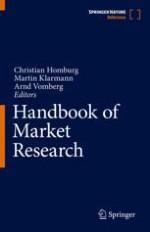2022 | OriginalPaper | Buchkapitel
Image Analytics in Marketing
verfasst von : Daria Dzyabura, Siham El Kihal, Renana Peres
Erschienen in: Handbook of Market Research
Aktivieren Sie unsere intelligente Suche, um passende Fachinhalte oder Patente zu finden.
Wählen Sie Textabschnitte aus um mit Künstlicher Intelligenz passenden Patente zu finden. powered by
Markieren Sie Textabschnitte, um KI-gestützt weitere passende Inhalte zu finden. powered by
